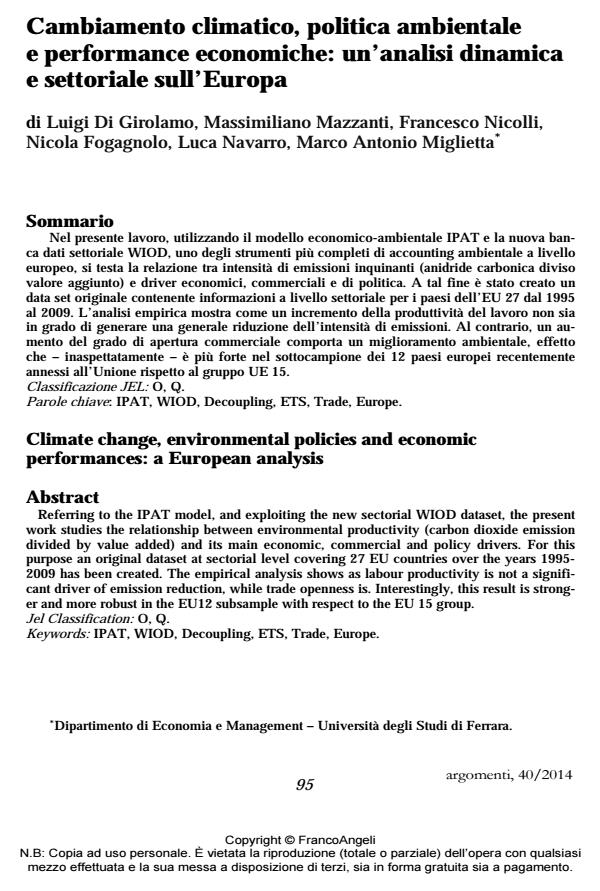Climate change, environmental policies and economic performances: a European analysis
Journal title ARGOMENTI
Author/s Luigia Di Girolamo, Massimiliano Mazzanti, Francesco Nicolli, Nicola Fogagnolo, Luca Navarro, Marco Antonio Miglietta
Publishing Year 2014 Issue 2014/40
Language Italian Pages 23 P. 95-117 File size 169 KB
DOI 10.3280/ARG2014-040005
DOI is like a bar code for intellectual property: to have more infomation
click here
Below, you can see the article first page
If you want to buy this article in PDF format, you can do it, following the instructions to buy download credits

FrancoAngeli is member of Publishers International Linking Association, Inc (PILA), a not-for-profit association which run the CrossRef service enabling links to and from online scholarly content.
Referring to the IPAT model, and exploiting the new sectorial WIOD dataset, the present work studies the relationship between environmental productivity (carbon dioxide emission divided by value added) and its main economic, commercial and policy drivers. For this purpose an original dataset at sectorial level covering 27 EU countries over the years 1995- 2009 has been created. The empirical analysis shows as labour productivity is not a significant driver of emission reduction, while trade openness is. Interestingly, this result is stronger and more robust in the EU12 subsample with respect to the EU 15 group.
Keywords: IPAT, WIOD, Decoupling, ETS, Trade, Europe
Jel codes: O, Q.
Luigia Di Girolamo, Massimiliano Mazzanti, Francesco Nicolli, Nicola Fogagnolo, Luca Navarro, Marco Antonio Miglietta, Cambiamento climatico, politica ambientale e performance economiche: un’analisi dinamica e settoriale sull’Europa in "ARGOMENTI" 40/2014, pp 95-117, DOI: 10.3280/ARG2014-040005